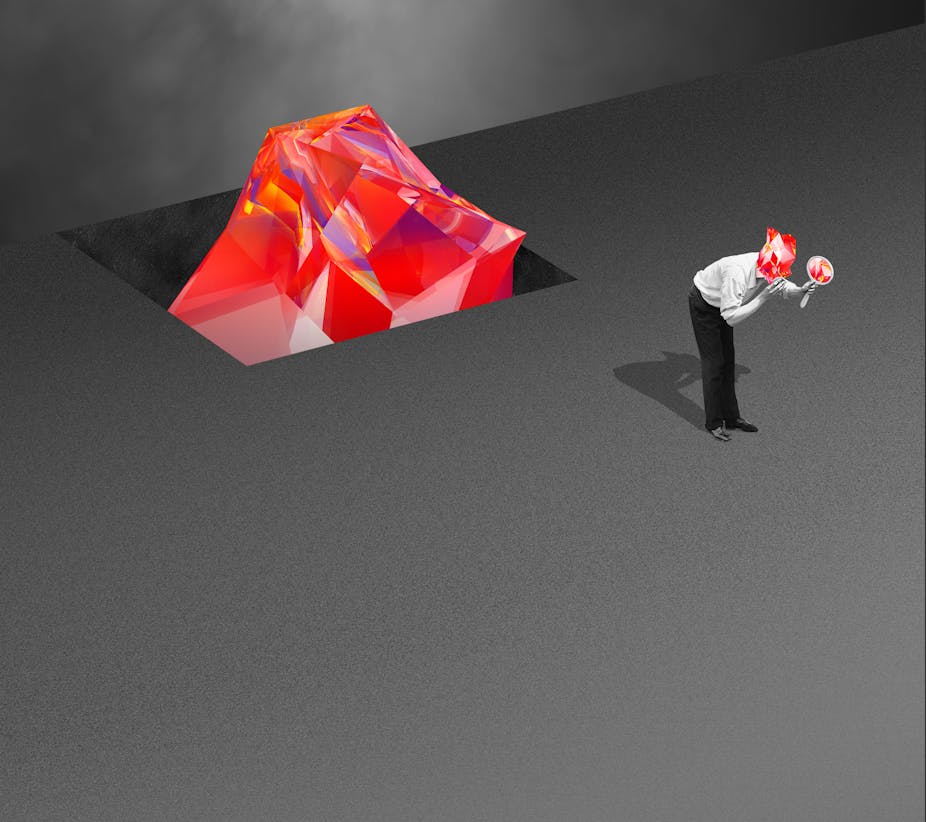Unsound Adelaide was arguably the loudest event at this year’s Adelaide Festival of the Arts. An offshoot of the annual Polish Unsound Festival, this three-night event last weekend showcased 12 acts ranging from experimental noise and ambient sounds through to electronic club music.
The event is now in its third year at the Adelaide Festival, and was co-curated by Adelaide Festival Artistic Director David Sefton and the Australian-born director of the Unsound Festival Mat Schulz.
The first night on Thurs March 12 began with Australian sound artist Lawrence English, whose sometimes ethereal, sometimes blustery sounds revealed the influence of his visit to Antarctica in 2010. His suggestion to the audience to sit or lie on the floor in the centre of the hall enhanced the immersive nature of his set, and emphasised the subtle changes in texture and frequencies.
British musician Gazelle Twin followed, and her impressive vocal range, both in pitch and colour, was used to full effect.
Japanese experimental rock band Fushitsusha was the most intriguing act of the first night. Fushitsusha’s asymmetrical, fragmented rhythms, screaming vocals, and dissonant, distorted harmonies were disorienting, as good experimental music often is.
While lead singer and guitarist Keiji Haino’s use of a slinky dragged across his guitar was not as aurally satisfying as one might have hoped, it was certainly visually engrossing.
The highlight of the event was Double Vision on Friday night, which was jointly commissioned by Unsound and the Adelaide Festival. This work was a collaboration between Australian audio-visual artist Robin Fox and AtomTM, who, according to his website, is considered to be father of electrolatino, electrogospel and aciton music.
AtomTM’s geometric, mostly grey-scale visuals complemented Fox’s stunning red, green and blue laser display, and Fox’s interest in synaesthesia was evident in the correlations between the lasers, and the texture and frequencies of sounds used.
The first two nights of Unsound Adelaide felt skewed towards dub and club rather than experimental and exploratory – even though the first night was pitched as the most experimental of the three.

The Saturday night, which was originally intended to be focused on electronic club music, ended up being the most eclectic, due to the late inclusion of HTRK and King Midas Sound System.
Local outfit HTRK (pronounced Hate Rock) seemed out of place in the program, with their languorous post-punk sound marking a significant shift away from the upbeat energy of Dopplereffekt and the ambient, industrial noise of Mika Vainio. Their set was also unfortunately marred by technical issues.
Dopplereffekt brought an element of fun to the night, with their melding of the aesthetics of 80s synth pop, 70s disco rhythms, and minimalism. Kevin Martin’s solo set as King Midas Sound System, a last minute addition to the line-up, turned out to be a great choice to end the event.
His non-stop one-hour long set morphed seamlessly from ambient sounds to industrial noise to intense dubstep.
One of the most common criticisms of electronic music performance since its inception is the lack of connection between performer and audience, with computer musicians neglecting the performative aspects of their presentation. I have been to a number of performances by laptop musicians that left me wondering whether the performer even noticed that the audience was there.

That was not the case with most of the laptop performers in this year’s Unsound Adelaide, with Lawrence English’s stage presence being particularly convincing. The visual aspects of the performances was one of the most compelling aspects, with some excellent lighting design, and interesting visuals by Dopplereffekt and Forest Swords, as well as the spectacular presentation of Double Vision mentioned above.
It is relevant and important that major arts festivals include the genres of music represented by Unsound – and it would be absurd for a festival of the scale of Adelaide Festival of the Arts not to engage with the electronic and the experimental in 2015.
But one of the difficulties in curating a broad, genre-crossing event like Unsound Adelaide is getting the balance right in terms of artistic risk-taking, and this year’s program was quite safe, and not nearly as exploratory as I would have liked.
The festival period is the one time of the year in Adelaide when audiences are particularly receptive to challenging art, and this felt like a missed opportunity to take artistic risks.
Unsound Adelaide took place on March 12-14. Details here.

